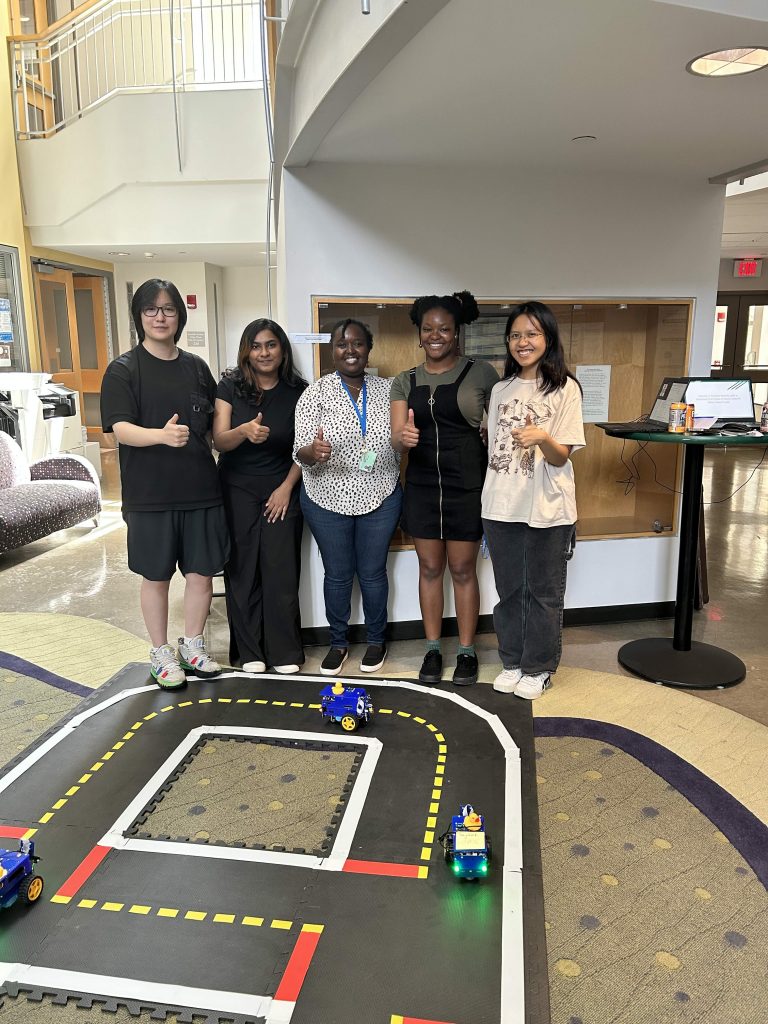Tasks :
- Participate in the Science Center Symposium
- Complete the Braitenberg agent task in edx
- Goals: Learn how the Duckietown LX works & send commands to the duckiebots
- Follow steps in the developer’s manual
- Goals: learn how to create a new project, add code, view the simulation, and send commands to the bot
- Paper reviews for WAFR (International Workshop on the Algorithmic Foundations of Robotics) 2024
Science Center Symposium :
- Succesfully presented at Science Symposium at Mount Holyoke College

Braintenberg Agent Task :
- Ran the braintenberg task in Duckiebot. It was not quite sucessful
- Followed developer’s manual for running simulation – Some of the steps were missing, had to follow gym duckietown github repository to understand the steps.
- Reviewed the paper “The Teenager’s Problem: Efficient Garment Decluttering as Probabilistic Set Cover”. Here is my review of the paper:
- Summary:
- The paper addresses the challenge of efficiently removing scattered garments from a planar surface using robotic grasping techniques. The authors propose segment-based, depth-based, and hybrid approaches to solve this problem, framing it as a Probabilistic Set Cover Problem, and using a mixed integer linear program to solve it. Using the Segment Anything Model (SAM) for segmentation and Mixed Integer Linear Programming (MILP) for grasp planning, they achieve significant improvements in grasp efficiency. Their experiments demonstrate a 50% increase in Objects per Transport (OpT) with the segment-based method and an 81% improvement with a consolidation approach.
- Strengths of the paper:
- The paper was very readable due to its clear and straightforward language, and it provided detailed explanations for each term.
- I really liked the abstract and introduction part which gave the overview of what the paper contains.
- I really liked their experimental parts as they ran several simulations (25) with 10 different clothes and colors.
- Weakness of the paper:
- I was wondering if the robot can identify clothes if the surface has the same color as fabric because they use RGB color to identify.
- They did not talk about what kind of gripper they are using, or if it changes the situation for different grippers as the algorithm applies in different situations.
- They have used related work references before their own problem set. But I don’t think it changes the flow of the paper. It is just a very different thing to notice.
- Maybe it needs more details on the computational resources required for the segment-based methods, and more information about the hardware that has been used.
- They provided a video of the implementation. It seemed the robot was not noticibly efficient as they mentioned 81% improvement with a consolidation approach. But it is also valid that their focus was mainly on objects per transport not the time length.